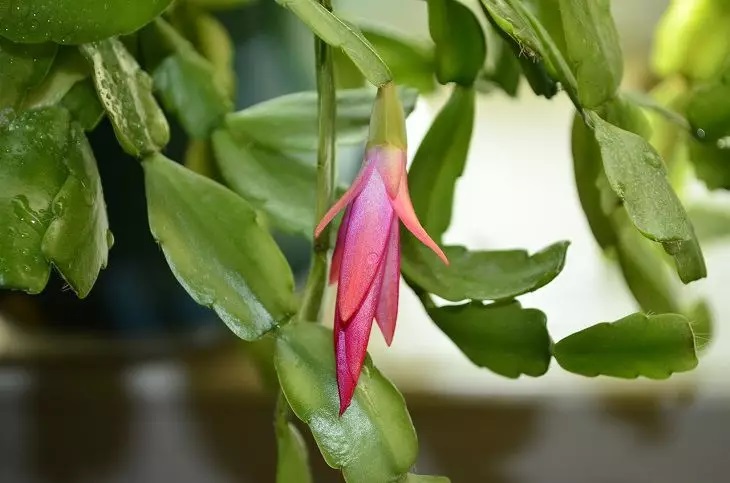How to make a Decembrist bloom twice a year
The Decembrist is an epiphytic cactus that lives in tropical forests. The official name of the plant is Schlumbergera. It is popularly called the Decembrist because it blooms in December-January.
For the same reason, it is also called the Christmas cactus. It is generally accepted that the Decembrist produces one wave of flowering per year. But with proper care, this plant blooms again. And this result can be achieved with proper care.
What does a Decembrist need?
Many are misled by the fact that it is a cactus. But the Cactaceae family is more than 100 genera and almost 2 thousand species. And not all of them grow in deserts, as is commonly believed.
Schlumbergera is a branching shrub native to the tropics. In order for the plant to grow well and bloom abundantly, it needs to be given conditions as close to natural as possible.
Priming
First of all, pay attention to the soil. Epiphytes grow on other plants. In this case, the cactus grows in places where fallen leaves, moss and other organic matter accumulate. Therefore, the soil should be light, loose, rich in organic matter. Cactus soil and leaf humus, mixed 1:1, are ideal for this. You can also add moss, pieces of bark and a few small twigs.

Watering
This cactus needs a rainy season, as it is originally from the tropics. If you start the "rainy season" (regular watering) in early March, the Decembrist will give its first wave of flowering already in November. Then it will have time to grow buds a second time.
Drought
The rainy season is followed by the dry season, that is, the period of rest. It should also be organized by the owner from the beginning of September. It is due to this that abundant flowering is formed. During the period of rest, the plant needs to be watered a little and only after the earthen lump dries out almost completely.
The temperature at this time should be between 12–16 degrees.
Top dressing
If you transplanted the Decembrist into nutritious soil in spring, you can do without fertilizing. Or do it once a month.
If the plant has not been replanted, it must be fed twice a month from spring to autumn with a complex fertilizer containing nitrogen.
But there should be 2-3 times less nitrogen there than for ordinary leafy plants. It is best to alternate nitrogen fertilizers with potassium-phosphorus ones. This will promote the formation of flower buds.
How to organize seasons
From March to the end of August, you need to water the Decembrist well, feed it, spray it and, preferably, wash it under a warm shower.
You can take it out into the garden and place it in partial shade. The Decembrist grows under the shade of trees, so it does not tolerate aggressive sun.
From the beginning of September, watering should be reduced to a minimum, fertilizing should be stopped, and the temperature should be lowered to 12-16 degrees. You can simply leave the plant in the garden until the temperature begins to drop below 12 degrees.
In the house, the Decembrist should be placed on a cool windowsill. Then by mid-November or early December, the first flower buds will appear on it.
From the moment flower buds appear, regular watering should be resumed, and the plant should be fed with potassium-phosphorus fertilizer. Ash or monopotassium phosphate will do. Nitrogen should not be used.
With proper care, the plant accumulates enough nutrition to produce active flowering in the first wave, and then it will still have enough strength for the second wave. It will not be as intense, but will still please the owner.
